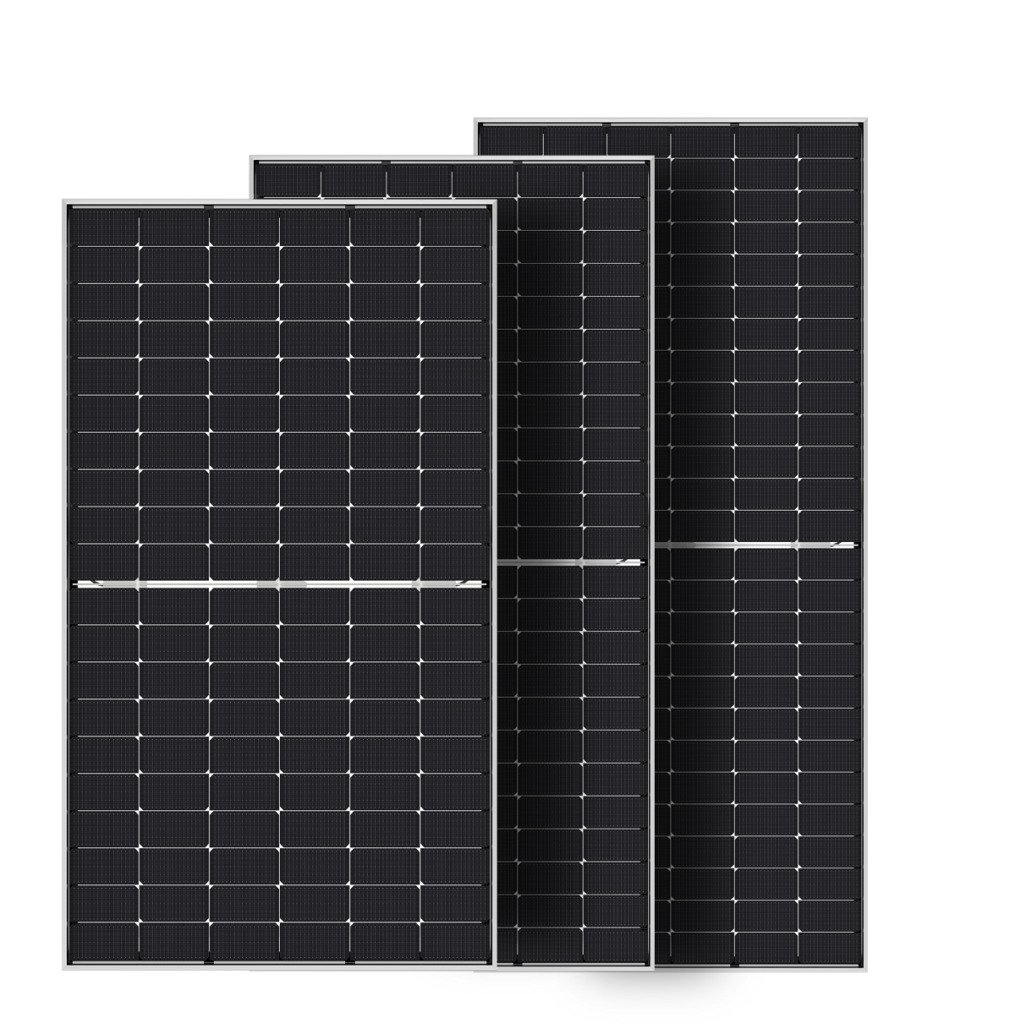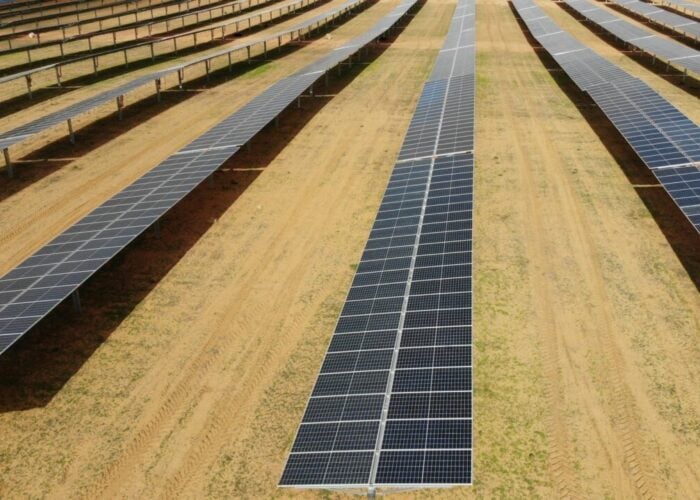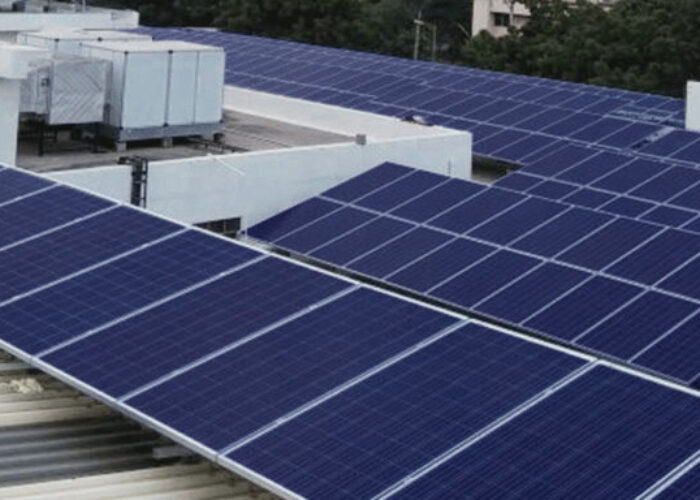
The solar industry’s n-type transition presents a major strategic opportunity and is one JinkoSolar is aiming to grasp with both hands.
Speaking to PV Tech at this year’s Intersolar Europe exhibition, Frank Niendorf, general manager for Europe at JinkoSolar, said that a strategic shift is underway, the solar industry moving away from a model which purely perceives PV modules as commodity-based and, as a result, cutthroat competitive. That transition has been underway for some years in earnest, with the race to bottom on pricing now arguably consigned to the pre-pandemic era, made unpalatable by soaring materials and logistics costs.
Unlock unlimited access for 12 whole months of distinctive global analysis
Photovoltaics International is now included.
- Regular insight and analysis of the industry’s biggest developments
- In-depth interviews with the industry’s leading figures
- Unlimited digital access to the PV Tech Power journal catalogue
- Unlimited digital access to the Photovoltaics International journal catalogue
- Access to more than 1,000 technical papers
- Discounts on Solar Media’s portfolio of events, in-person and virtual
This has coincided with a drastic technology shift, one which bears all the hallmarks of the way in which solar moved from polycrystalline to mono, and then to PERC en masse. Only this change, in embracing tunnel oxidised passivated contact (TOPCon) cells and modules as the industry’s foray into a new era of n-type modules, will happen significantly quicker than even the most ardent of change strategists may have argued, Niendorf said.
“We think this pretty dramatic transition from PERC to n-type will happen much faster than everybody expected, and we are fully convinced this is the future market standard,” he said.
JinkoSolar’s position in n-type, and particularly TOPCon, has been on the ascendancy for some years, having been focusing on the technology from an R&D perspective. That gave the manufacturer confidence in the technology and, as Niendorf noted, its emergence was timed with JinkoSolar’s completion of its listing on Shanghai’s STAR Market earlier this year.
This, Niendorf said, gave the company the resources to invest and left Jinko in a “strategically very comfortable situation”. Jinko’s overall manufacturing capacity is now set to ramp drastically, with the company having set itself the target of having 65GW of capacity by the end of this year – around two-thirds of which is to be TOPCon – and the majority of which will be fully integrated.
As a result, more than 10GW of TOPCon modules will be shipped by JinkoSolar by the end of this year, with Europe expected to be a leading destination given its market maturity.
Those figures, Niendorf argued, would be enough to cement JinkoSolar’s position at the forefront of the n-type transition.
“It gives us such a nice competitive edge, and the sheer dimension of the capacity will lead to economies of scale which will help us bring the manufacturing cost down very, very close to being competitive. Then it becomes a no-brainer,” Niendorf said.
N-type modules currently run at a premium to traditional p-type PERC considering the costs of higher purity polysilicon necessary for n-type wafers and the additional manufacturing processes involved but, given the inherent benefits in efficiency, temperature coefficient and bifaciality, an increasing number of studies are demonstrating LCOE advantages. Bringing manufacturing costs down to within PERC range would therefore, as Niendorf said, cement TOPCon’s “technical superiority”.
“From an investor’s point of view, there’s no reason why you should still use [PERC], and this is very exciting… it will be interesting to observe now how the markets deal with that and how quickly they will follow,” he said.
Of course, JinkoSolar is not alone in investing heavily into TOPCon module production, but the manufacturer is determined to steal a march on its rivals in reaching critical manufacturing capacity as quickly as possible.
It is here where the timing of JinkoSolar’s recent IPO is critical, Niendorf said. “While our peers have invested heavily into PERC in the last few years, because their IPOs were earlier, ours was later, and now we are lucky not to sit on this capacity,” he said.
But could the same not be true of the next solar technology transition? TOPCon has, by some, been adjudged to be the industry’s bridge to heterojunction or even perovskite tandem cells, two technologies the industry has equally bright ambitions for. By investing so heavily in TOPCon, could JinkoSolar not be left losing ground to other manufacturers who could, in three, four or five years’ time, repeat the investment cycle, but in HJT or tandem cell production?
“There’s always a risk, and this has been the case for the last 10 or 20 years in this industry. You have to be super careful what you invest in because if you bet on the wrong horse, then you will be out of the market. I’m sure there will be alternative technologies, in one perspective there’s a technical or efficiency consideration, but the other side, which is just as important, is manufacturing costs,” Niendorf said.
“Especially for heterojunction compared with TOPCon, how quickly can you bring down production costs? I think this is something we will achieve with TOPCon very, very quickly. I wouldn’t say now that we don’t have certain plans for the future [in HJT], but at least for the next, say, two to three years, we are confident that TOPCon is the best value proposition.”







